Listing popular specialists:

Senior Resident, 17 years of experience

Dr. Hitesh Garg Specializes in the following

Director, 27 years of experience

Dr. Sandeep Vaishya specializes in the following:

Chief, 30 years of experience

Dr. H. S. Chhabra specializes in the following:

Consultant, 19 years of experience

Dr. Arun Saroha specializes in the following:
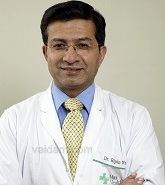
Director, 30 years of experience

Neurosurgery , Spinal Surgeries , Image guided surgery, Disc replacement, Endoscopic Disc surgery Endoscopic Cranial Surgery, Brain Tumour Surgery, Special focus on Minimally Invasive Surgery for Spinal Tumours
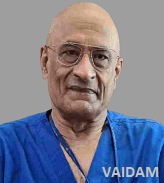
Senior Consultant, 24 years of experience

Cervical and lumbar discectomies, cervical and lumbar disc replacements, vertebrectomies, TESSYS, Reconstruction for spinal trauma, Spinal tumours and the full spectrum of spinal deformities

Senior Consultant, 28 years of experience

Dr. Kalidutta Das Specializes in the following:

Director, 21 years of experience

Dr. Aditya Gupta specializes in the following:

HOD, 15 years of experience

Brain tumour surgery, Cervical surgery, Skull base surgery, Spinal fusion, Spinal tap, Spinal decompression, Spine surgeon, Brain surgery

Senior Consultant, 44 years of experience

Specializations of Dr. Sajan K Hegde are listed under:

Senior Consultant, 49 years of experience

Neuro – Oncology, Brain and Spine Tumours, Cerebrovascular Surgery, Migraine, Sleep Disorders, Epilepsy, Headache, Seizures, Hyperactivity, Stroke, Head Trauma, Parkinson's Disease, Neuropathy, Alzheimer Disease, Dementia, Attention Deficit, Cranio Vertebral Anomalies
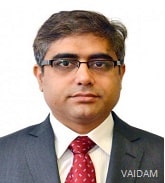
Senior Consultant, 27 years of experience

Dr. Manoj Miglani specializes in the following:

Director, 17 years of experience

Fracture Treatment, Orthopedic Physiotherapy, Joint Replacement Surgeons, Spine-Cervical, Disc-herniation of back or neck, Trauma of the Spine, Degenerative disc conditions including Osteoarthritis, Failed-back syndrome, Infections of the spine, Osteoporosis, Tumours in the spine etc.

Senior Consultant, 21 years of experience

Spinal Trauma Reconstruction, Lumbar Canal Stenosis, Scoliosis, Kyphosis, Spondylolisthesis, Tumors of Spine, Tuberculosis
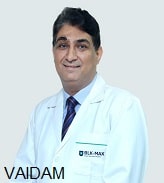
Chief, 26 years of experience

Dr. Girdhar specializes in:
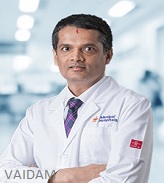
HOD, 24 years of experience

Specializations of Dr. Vidyadhara S. are listed under:

Head of Department, 20 years of experience

Specializations of Dr. Abhaya Kumar are listed under:
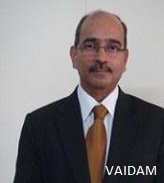
Consultant, 44 years of experience

Dr. Raghava Dutt Mulukatla's Specialization are:

Consultant, 34 years of experience

Dr. Abrar Ahmed's Specialization are listed under:

Consultant, 38 years of experience

Dr. R T S Naik Specializes in:
Our Services for Spinal Laminectomy in India
Transparent - Professional - Without Hassles
The ruptured and damaged portion of the disc is only removed during the surgery which accounts for 10 to 20% depending on the extent of stenosis.
Laminotomy- Treatment for nerve compression in the spinal cord
Hemilaminectomy - Removal of the lamina of the spinal canal of only one side
Open Laminectomy- Removal of a small portion of lamina to relieve pressure on the spinal cord.
Laminectomy is a low-risk surgery with more satisfying results. The risk of bowel, bowel inconvenience is very low. Surgery and patient recovery are very safe.
95-98%
After the surgery the patients will get relief from pain and be able to perform normal activities. However, in some cases there are chances of reoccurrence in the same disc or adjacent disc depending on the underlying cause.
Laminectomy is associated with risks of any operative procedure and some risks specific to the procedure. There are some short and long term risks of the procedure Bleeding and infection at the site of surgery Damage to the spinal cord Loss of bladder and bowel control Numbness of the legs Persistent back pain Spinal cord damage Tear in spinal cord may leads to leakage of cerebrospinal fluid
Spinal laminectomy is the surgery which is done for treating the symptoms of central spinal stenosis and narrowing of spinal canal, in this surgery all part of lamina is being removed to provide more space for the spinal cord which is already compressed.
Spinal laminectomy surgery all part of the lamina and provides space for the compresses spinal cord and nerve roots, this surgery is done to remove pain caused by neural impingement because of spinal stenosis.
Spinal laminectomy is usually done in those cases where patient has got spinal issues such as for relieving spinal stenosis. In spinal stenosis the spinal cord becomes narrowed and then it puts pressure on spinal cord along with root of nerves. It is developed because of shrinked spine disc, spine arthritis, swelling of bones and ligaments, spinal tumor, slipped disc and injury due to trauma.
Yes, in most case getting relief from pain is much better than going back to do normal activities, even though the diseased vertebra and disc may not get completely normal there are chances of recurrence of problem.
Entire disc is not removed in spinal laminectomy, only the ruptured and the diseased part of the disc is being removed by laminectomy which accounts for around 15 to 30 percent of the disc.
No, laminectomy is not dangerous it is safe procedure and maximum recovery is seen in most of the cases. If the patient completely follows the post surgery guidelines then the risk will be very less and patient will have less anxiety.
2-3 days in the hospital.
1-3 hours
Spinal laminectomy surgery takes around four to six hours to be done depending on the complexity of the case.
Spinal laminectomy surgery is being done by a highly qualified neurosurgeon or an orthopedic surgeon.
The steps followed during spinal laminectomy surgery are first the surgical site is being cleaned with antiseptic lotion and then small mini incisions are being made in middle of neck and back of patient. Lamina bones are being removed and with the help of bone spurs small fragements of disc are also removed. At last the incisions are closed with the help of stitches and sterile bandages are kept for covering the incisions.
Walking is the best activity you can do for the first 6 weeks after surgery. You should start out slowly and work up to walking 30 minutes at least twice a day. Do not be surprised if you require frequent naps during the day.
Avoid strenuous activities, such as bicycle riding, jogging, weight lifting, or aerobic exercise, until your doctor says it is okay. Do not drive for 2 to 4 weeks after your surgery or until your doctor says it is okay.
The patient is being transferred to the operating room after the surgery and after the effects of anaesthesia wears patient gain consciousness and after they are asked to remain in resting position. The patient is told to start moving at earliest depending on the surgeon advice. Patient is advised to stay in hospital for two or three days after surgery.
The activities restricted after spinal laminectomy surgery are you should avoid strenuous activity such as climbing of stairs and then you can slowly increase your movements such as walking and you need to visit doctor for follow up. There is no need to scrub the incison site as it can harm the stitches which can cause infections.
You should immediately contact your surgeon if you notice some symptoms such as chest pain, redness near the incision site, difficulty in breathing, fever, difficulty in urination and swelling around he legs.
Some of the risks and complications of the surgery includes infection, drug reaction, formation of blood clot, bruises etc.
Risks And Complications
Since laminectomy is associated with the spinal cord, great care needs to be taken while performing the surgery. There are risks involved; even though enough precautions are taken. The general risks of laminectomy are listed here.






NABH Certified Healthcare Discovery Platform
Vaidam is NABH certified healthcare discovery platform that will connect you to top-notch medical experts, hospitals, wellness options, and trusted travel partners to help identify and make the right healthcare choices.

Researched & Personalized Treatment Plan - Under One Roof
You can search for the best hospitals, read about them, view photographs of the facilities at the hospitals and the places at which the hospitals are located, and check the cost of treatment.

Quality Treatment Within Your Budget
As soon as you post an enquiry, the patient relation team will collect details from you, share them with the doctors and hospitals on Vaidam's panel, and get a personalized treatment plan. We research to get quality treatment within your budget.

Treatment to Travel
Vaidam concierge assists patients, to get medical Visa, the best airline fares and arrangements for your stay. Our concierge also helps you with daily travel, language, and food concerns. Vaidam does everything to be your perfect host. All of Vaidam’s services are free of cost to patients.

International Reach
Vaidam Health has network in 15+ countries, which includes India, Turkey, UAE, Germany, South Korea, Thailand, Malaysia, Spain.
Note: Vaidam Health does not provide medical advice, diagnosis or treatment. The services and information offered on www.vaidam.com are intended solely for informational purposes and cannot replace the professional consultation or treatment by a physician. Vaidam Health discourages copying, cloning of its webpages and its content and it will follow the legal procedures to protect its intellectual property